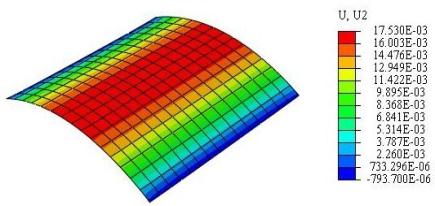The need for a better aircraft performance is increasingly prompting designers towards the concept of ‘morphing’ or ‘shape-adaptable’ structural systems. To improve the performance of the aircraft, multi-stable composites could provide an interesting alternative to traditional designs. One approach to morphing aircraft is to use bi-stable structures that have two stable equilibrium configurations to define a discrete set of shapes for the morphing structure. Moving between these stable states may be achieved using an actuation system or by aerodynamic loads. Studding the application of bi-stable composite plate in the morphing wing is aim of forthcoming investigation in this project. Figures 1 and 2 show two conceptual novel designs of morphing airplane.
 |
 |
|
Fig. 1 Advanced concepts NASA envisions for an aircraft of the future
|
Fig. 2 RoboSwifts : tiny micro planes with unique "morphing" wings have been developed by engineering students in the Netherlands
|
The interest in bi-stable composite structures comes from the fact that these structures can have two different shapes and they are completely stablein both shapes without need to a continuous power supply and mechanical hinges. It is well known that in the asymmetric composite laminates bi-stability occurs due to residual stresses resulting from differences in coefficients of thermal expansion and elastic properties in each lamina. Consequently these structures when subject by a thermal load can have large out of plane deflection.
 |
 |
|
(a) the first stable shape
|
(b) the second stable shape
|
|
Fig. 3 The first and the second stable shapes for graphite-epoxy asymmetric laminate with composition [0/90]
|
|


 |
 |
|
(a)
|
(c)
|
 |
 |
|
(b)
|
(d)
|
|
Fig 5 (a),(b) The first and second stable shapes respectively by considering the temperature dependency of mechanical and thermal expansion properties , (c),(d) The first and second stable shapes respectively without considering the temperature dependency of mechanical and thermal expansion properties
|
|



 Subscribe to RSS Feed
Subscribe to RSS Feed